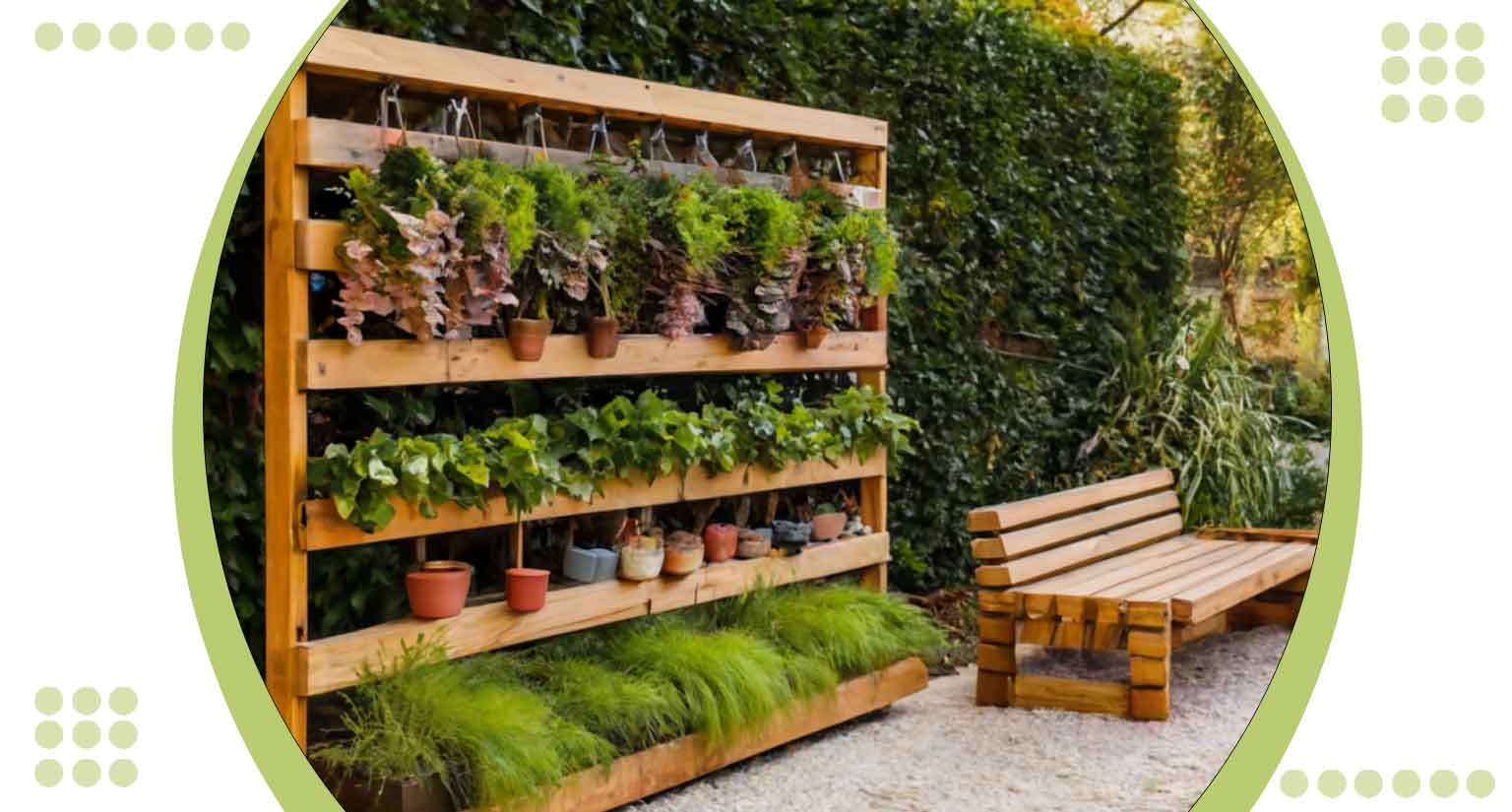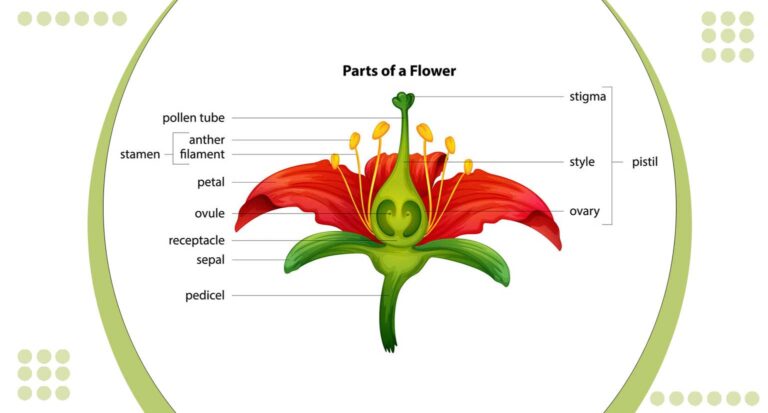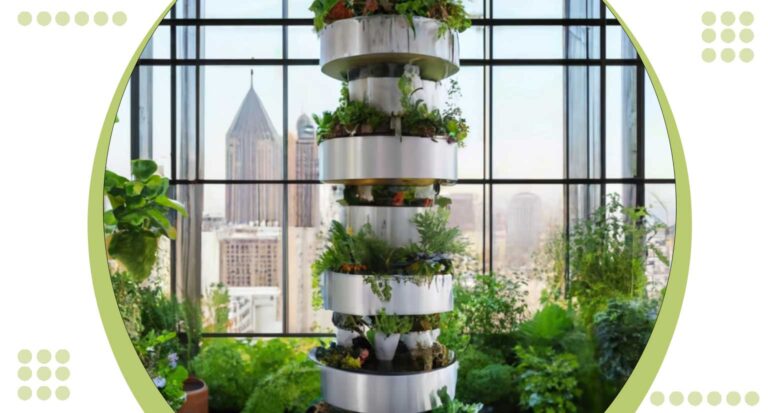Benefits of Vertical Gardening: 18 Surprising Benefits
Vertical gardening is revolutionizing the gardening world, particularly in urban environments where space is often limited. By making the most of vertical surfaces, this innovative gardening method allows people to grow a variety of plants in a more space efficient manner. The benefits of vertical gardening go beyond mere space saving, offering a range of advantages that make it an appealing choice for gardeners of all levels.
One of the standout benefits of vertical gardening is its ability to maximize available space. In densely populated cities, where outdoor space is often scarce, vertical gardening enables individuals to cultivate plants on walls, balconies and fences. This efficient use of space allows for a flourishing garden even in the smallest of areas, making gardening accessible to more people.
Another significant advantage of vertical gardening is its positive impact on air quality. Plants naturally filter pollutants from the air and having a concentrated area of greenery can enhance this effect. Vertical gardens can play a crucial role in improving the air quality in urban settings, contributing to a healthier living environment.
Beyond its practical benefits, vertical gardening also adds a unique aesthetic appeal to any space. Transforming bare walls and empty fences into lush, green displays can significantly enhance the visual appeal of both indoor and outdoor areas. This not only beautifies the environment but also creates a calming and serene atmosphere, which can improve mental well being.
Vertical gardening is also a sustainable practice that can reduce the carbon footprint associated with food production. By growing your own vegetables, herbs and fruits at home, you can decrease reliance on store bought produce that often involves extensive transportation and packaging. This localized approach to food production helps lower carbon emissions and promotes sustainability.
The versatility of vertical gardening is another reason for its growing popularity. It can be adapted to a wide range of settings and plant types, from ornamental flowers to edible crops. This flexibility allows gardeners to experiment with different plants and designs, making vertical gardening an exciting and rewarding activity for both novices and experienced gardeners alike.
18 Surprising Benefits Of Vertical Gardening
Space Optimization
Vertical gardening maximizes the use of limited space, making it ideal for urban dwellers or those with small yards or balconies. By growing upwards instead of outwards, you can cultivate a lush garden even in tight quarters.
Improved Air Quality
Plants act as natural air purifiers, absorbing carbon dioxide and releasing oxygen. Vertical gardens densely packed with vegetation can significantly enhance air quality, contributing to a healthier environment indoors and outdoors.
Enhanced Aesthetics
Vertical gardens add visual interest and beauty to any space. Whether it’s a living wall gracing the facade of a building or a vertical planter adorning a room, these green installations elevate the ambiance and charm of their surroundings.
Noise Reduction
The dense foliage of vertical gardens can help dampen noise pollution, creating a more serene and peaceful environment. Whether you’re in a bustling city or a suburban neighborhood, the greenery acts as a natural buffer against unwanted sounds.
Increased Biodiversity
Vertical gardening encourages the growth of diverse plant species, creating microhabitats for insects, birds and other wildlife. This biodiversity promotes ecological balance and contributes to the overall health of ecosystems.
Temperature Regulation
The foliage of vertical gardens helps moderate temperatures by providing shade and insulation. In urban areas, where heat islands are prevalent, vertical gardens can mitigate the effects of rising temperatures and improve comfort levels.
Food Production
Vertical gardens are not just for ornamental purposes, they can also be productive sources of fresh produce. From herbs and vegetables to fruits and edible flowers, you can grow a variety of nutritious crops in vertical planters or hydroponic systems.
Stress Reduction
Surrounding oneself with greenery has been shown to lower stress levels and promote relaxation. Vertical gardens offer a soothing oasis amid the hustle and bustle of modern life, providing a sanctuary for mental and emotional well being.
Improved Indoor Environment
Indoor vertical gardens act as natural humidifiers, releasing moisture into the air and improving indoor air quality. They also absorb indoor pollutants, such as volatile organic compounds (VOCs), creating a healthier living or working environment.
Weed Suppression
Vertical gardening reduces the likelihood of weed growth by crowding out potential weed species with dense vegetation. This minimizes the need for herbicides and manual weeding, simplifying garden maintenance and upkeep.
Water Conservation
Vertical gardens typically require less water than traditional gardens due to their efficient use of irrigation systems and reduced soil surface area. This water saving feature makes them environmentally sustainable and cost effective.
Accessibility
Vertical gardens can be designed with accessibility in mind, allowing individuals with limited mobility or disabilities to participate in gardening activities. Raised vertical planters and adjustable height systems make gardening more inclusive and enjoyable for everyone.
Urban Heat Island Mitigation
In urban areas, where concrete and asphalt dominate the landscape, vertical gardens help counteract the heat island effect by cooling the surrounding environment through evapotranspiration and shading.
Educational Opportunities
Vertical gardens provide valuable educational opportunities for children and adults alike, teaching concepts such as plant biology, ecology and sustainability. They can serve as living laboratories for hands-on learning and environmental stewardship.
Creative Expression
Vertical gardens offer endless opportunities for creativity and personal expression, allowing individuals to design unique living artworks that reflect their personality and style. Whether it’s a whimsical arrangement of succulents or a sophisticated green wall, the possibilities are limitless.
Pollinator Habitat
Vertical gardens attract pollinators such as bees, butterflies and hummingbirds, providing essential habitat and food sources for these beneficial creatures. By supporting pollinator populations, vertical gardens contribute to the pollination of plants and the production of fruits and seeds.
Community Building
Vertical gardening can foster a sense of community and connection among neighbors and residents. Shared vertical garden projects encourage collaboration, communication and mutual support, strengthening social ties and building a sense of belonging.
Green Urban Infrastructure
Vertical gardens are integral components of green urban infrastructure, contributing to the sustainability and resilience of cities. They help mitigate the adverse effects of urbanization, such as pollution, heat stress and habitat loss, while enhancing the quality of urban life for present and future generations.
Vertical Gardens Can Improve Your Health
Vertical gardens offer more than just aesthetic appeal, they can significantly enhance your health and well being. By integrating green spaces into urban environments, vertical gardening promotes cleaner air and a closer connection to nature, which can positively impact physical and mental health.
One key health benefit of vertical gardens is their ability to improve air quality. Plants naturally absorb carbon dioxide and release oxygen, which helps purify the air we breathe. In densely populated cities where air pollution is a concern, vertical gardens act as natural air filters, reducing harmful pollutants and enhancing overall air quality.
This cleaner air can lead to respiratory improvements and a lower risk of respiratory related illnesses, benefiting the health of individuals living and working nearby.
Moreover, vertical gardens contribute to mental well being by creating calming and therapeutic environments. Studies have shown that exposure to green spaces and nature can reduce stress, anxiety and depression.
Vertical gardens provide a retreat from the hustle and bustle of urban life, offering a peaceful sanctuary where individuals can unwind and recharge. This connection to nature has been linked to improved mood, enhanced cognitive function and better overall mental health.
In addition to these direct health benefits, vertical gardens encourage physical activity and healthier lifestyles. Gardening itself is a form of moderate exercise, involving activities such as planting, watering and pruning. Engaging in these tasks promotes physical movement, flexibility and coordination, contributing to better physical health.
Furthermore, growing fresh produce in vertical gardens encourages consumption of nutritious fruits and vegetables, supporting a balanced diet and overall wellness.
In summary, vertical gardens play a vital role in improving health through cleaner air, stress reduction and physical activity promotion. By integrating these green spaces into urban environments, individuals can experience enhanced well being and quality of life, making vertical gardening not just a sustainable practice but also a beneficial investment in health.
What Is One Benefit Of Vertical Gardening Is To Improve Air Quality?
Vertical gardening presents a compelling solution to improve air quality, especially in urban environments where pollution is a significant concern. By utilizing vertical space to grow plants, this innovative gardening method enhances the natural process of air purification performed by vegetation.
Plants are known for their ability to absorb carbon dioxide and release oxygen through photosynthesis, a fundamental process that helps to cleanse the air of pollutants. In vertical gardens, plants are densely arranged on walls, balconies or structures, maximizing the surface area available for this air purifying activity. This concentrated greenery acts as a natural filter, effectively capturing airborne contaminants such as carbon dioxide, particulate matter and volatile organic compounds (VOCs). As a result, vertical gardens contribute to reducing air pollution levels and improving overall air quality in urban areas.
Moreover, vertical gardens can play a crucial role in mitigating the urban heat island effect, where cities experience higher temperatures than surrounding rural areas due to human activities and dense infrastructure. By shading buildings and reducing the absorption of solar radiation, vertical gardens help to cool the immediate environment. This cooling effect not only enhances comfort but also reduces energy consumption for air conditioning, further supporting environmental sustainability efforts.
In addition to their practical benefits, vertical gardens contribute to creating healthier and more pleasant urban spaces. Cleaner air promotes respiratory health and reduces the risk of respiratory related illnesses among residents.
Furthermore, the presence of greenery in cities has been shown to lower stress levels, enhance mental well being and improve overall quality of life. Therefore, investing in vertical gardening not only beautifies urban landscapes but also fosters healthier communities by addressing air quality challenges through sustainable and natural means.
Conclusion
In conclusion, the benefits of vertical gardening extend far beyond mere aesthetics, encompassing environmental, social and personal advantages. From space optimization and improved air quality to biodiversity conservation and stress reduction, vertical gardening offers a holistic approach to sustainable living.
By harnessing the power of greenery to transform urban landscapes and indoor environments, individuals can create thriving ecosystems that enhance their well being and quality of life.
As we continue to embrace the verdant revolution, recognize the immense potential of vertical gardening to reshape our cities, foster community connections and promote a healthier planet for future generations.
Experience the joys of vertical gardening and unlock a world of possibilities, where every leafy ascent brings us closer to a greener, more sustainable future.







